
Have you ever wondered how easy it would be to do Iceland with the family in tow? Some travellers have asked us whether Iceland would be suitable for a family holiday. Well, from our experience, that’s a resounding YES. Visiting Iceland with kids is exciting and rewarding at the same time and if your family loves adventure, it could be a dream come true for you all!
Introduction
It is really hard to find a land so blessed by the work of Mother Nature as Iceland – from its rugged coastline and lava fields, to the active volcanoes and great glaciers of the interior. Add to that a slew of waterfalls, a rural landscape occupied by cute fluffy toy-sized horses, and the northern lights and you have a fairy tale destination to be remembered by your kids for life.
Though Iceland doesn’t have many child-oriented destinations or theme parks other than its many swimming pools, it provides a completely captivating new angle of experience for a great family vacation. The wide-open spaces of the Land of Ice and Fire offer a range of interests that kept our family happy and interested throughout the months we spent there.
But first, the practicalities. What do families need to know to enjoy a great time here?
Child-Friendly Accommodation and Towns
Iceland is naturally a safe and child-friendly country. Besides the sheer abundance of healthy raw nature, most cottages and farmsteads offer accommodation for family groups. Hotels in big towns will be geared up for families too, with facilities for providing cribs in rooms and high chairs in the dining rooms. Last but not least, many restaurants also offer discounted children meals, and most toilets in public spaces have dedicated baby changing rooms.
How to Get Around in Iceland with Children
It’s pretty easy to travel around Iceland. Most people live in Reykjavik which is a safe and friendly city with good buses. For travel farther afield, it’s best to hire a car or even for longer journeys you can go by air. In any case, download the offline Google map for the whole island before you travel. Google maps is a bit shaky and quirky there (for example it might describe a roundabout in terms of merging and turning traffic) but we never got lost (except for the time we asked it to take us to the Zoo and it took us to a hairdresser called “Zoo”)
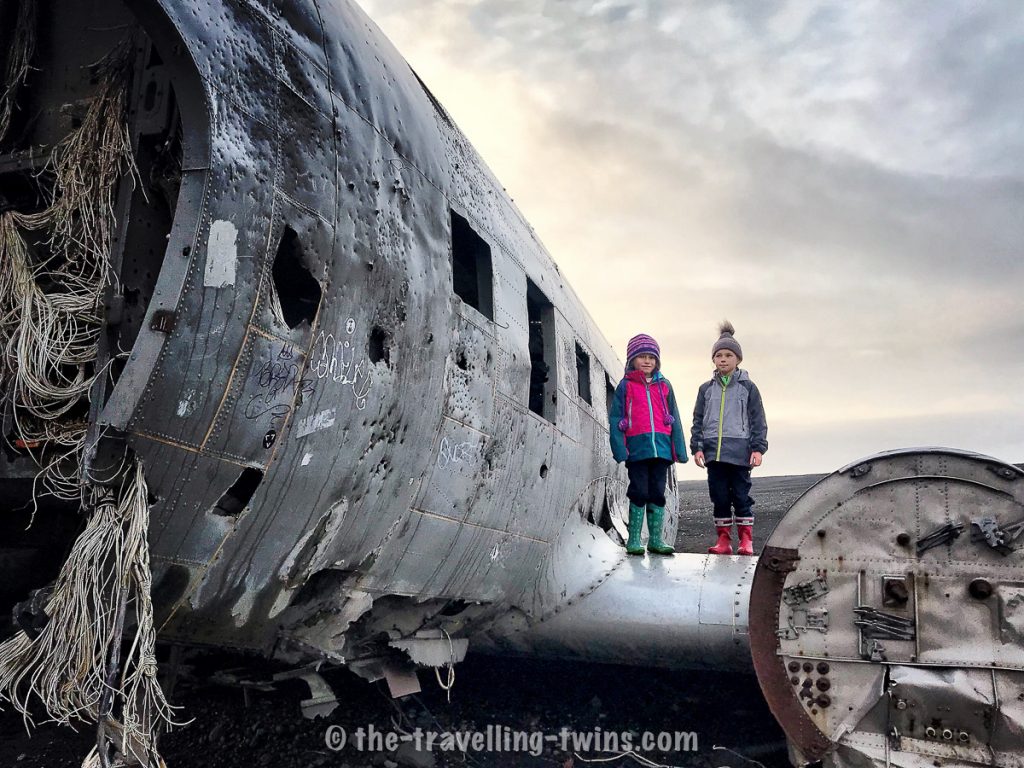
Public Bus Service
Public buses in Iceland are clean and comfortable. Apart from taxis which are fairly expensive, the normal service buses provide the easiest transfer from your landing in the International Airport at Keflavik. So you might as well get familiar with them straight away. It’s a long journey (more than 50km to Reykjavik) so prepare for it by downloading the Straeto bus service app (download for iTunes or Android) to your phone before going, or as a last resort by using the free airport wifi.
The app has a journey planner and allows you to pay online for bus journeys before you travel. The buses themselves have wifi, and the app has a map that shows your live GPS location. Sounds perfect? Well it’s pretty good but the app can still leave you confused. The routes are calculated assuming that you know the locations of all the named bus stops. You can’t recall the calculated trip once on the bus because it recalculates a new journey for you assuming you missed the bus. The new route may have the changes at different places. So our top tip is – when you have calculated your route in advance, take screenshots of all interchanges. You can later interpret that by comparison with your offline Google map.
Note: Reykjavik central bus station is called BSI. No one will tell you this. It’s assumed everyone knows it! The good news is that Iceland’s buses have such good wifi transmission that when we were in a hire-car, our phones would ping with incoming messages when we overtook public buses or sat next to them at traffic lights.
Car Rental
Of course, the airport also has car hire. We use (link) for car hire. It is a broker rather than a company and has always found us a great deal internationally including in Iceland. If your children need car seats, it’s best to take your own. Our miserable repeated experience is that car hire companies are unreliable with providing them and we have been either let down and stranded, or forced to go on a child-seat shopping-trip from airports more than once.
Our recommendation from personal experience of numerous car seats for kids aged 4-12, and/or weighing between 15-36kg and/or between 120 and 150cm is the Mifold Grab and Go. These are completely portable and easy to use (link to our review). If your children are younger than that, then you might consider hiring child seats from the car rental company, though as well as being unreliable, this is expensive and it can be cheaper to buy them even for one week than hiring them. But Keflavik is a long way from the shopping centres of Reykjavik, so consider taking the bus or hotel transfer service to your accommodation then buy cheap car seats in town before hiring a car in Reykjavik centre.
Coincidentally most of the car hire offices in Reykjavik are located in the city centre domestic airport. All of them except Hertz are on the west side of that airport (in the terminal building, but far away from the airport hotel as we found out after a long windswept walk the wrong way. – oops!!)
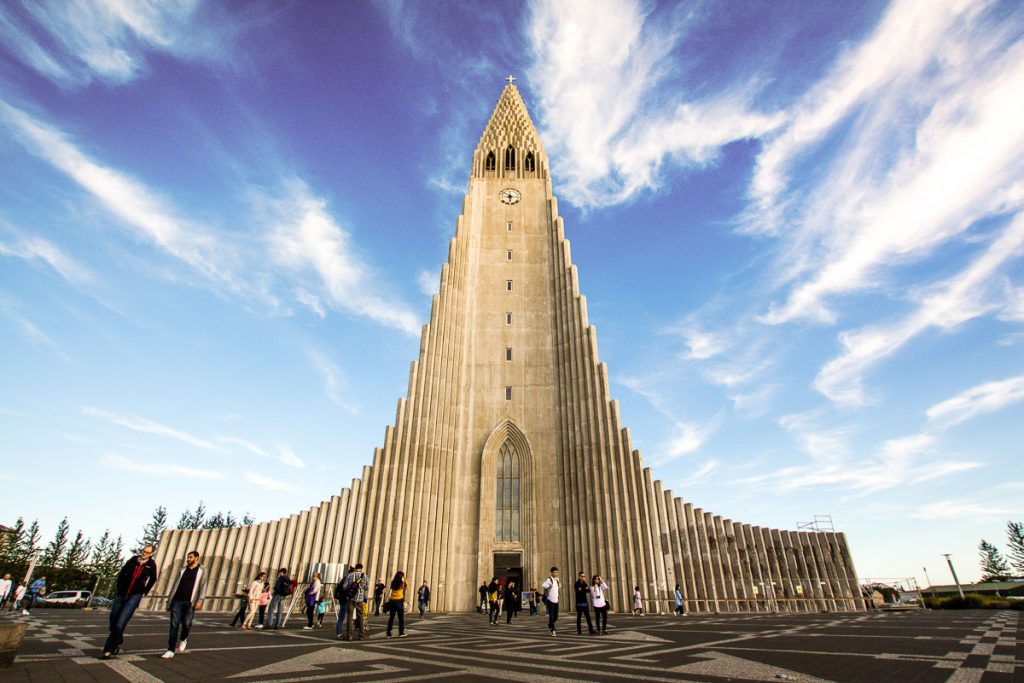
Driving in Iceland is easy. Icelanders are responsible drivers, The national speed limit is 90km/hr (about 60mph) and roads are well signposted. But before driving any long distance, especially in the winter, check the website about road conditions (link) If you are planning to drive in the dark – and in winter you will be – then be aware that most of the roads outside Reykjavik are without street lights. The most frequent damage recorded to rental cars in Iceland is bent hinges and panels because doors are frequently caught in wind gusts when being opened. Our tip: park to face the wind whenever possible and make a rule that the kids must never open their own doors. You do it for them. Use of Google maps is essential unless you want a sat-nav talking Icelandic for your navigation companion. So it’s a good idea to pack a smartphone mount and a charging cable for driving.
Other Considerations
For more general things to consider see the closing section below. Right now, here are lists of the best things to see and do.
What to Do in Iceland with Kids
There are plenty of things to do in Iceland with the family. Our tip is to combine natural sightseeing, with outside activities and adventures and an occasional museum or indoor attraction.
Here are some of the best things to do in Iceland with kids, we have listed go-it-yourself activities first, organised group activities are listed in the next section below:
Dip in a Geothermal Pool
Iceland is naturally one of the colder countries in the world, and so taking a dip in a geothermal pool is a must. There are natural geothermal pools sited almost everywhere around the island and lots of naturally heated municipal swimming pools in Reykjavik .
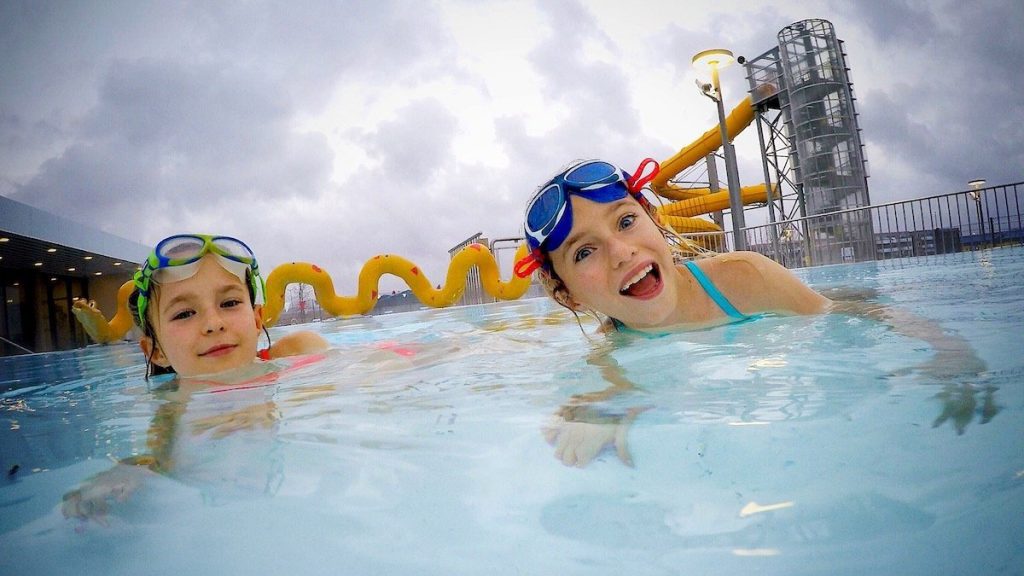
Most local pools are cheap and family friendly and some even have slides and fountains as well as shallow pools for younger kids. While we were staying in Iceland we bought a season ticket to our local geothermally heated pool which we visited almost everyday. It was super cheap and and we had great time. (Link) If you are visiting Iceland with kids there are lots of local pools. They are much cheaper than the famous Blue Lagoon. In fact unlike almost everything else in Iceland apart from electricity, they are cheap by international standards too!
Learn About the Vikings
Learning about the history of the Vikings is one of the most interesting things to do in Iceland. It was these epic explorers who discovered the New World colonised Iceland and Greenland and did much to shape the island into what it is today.
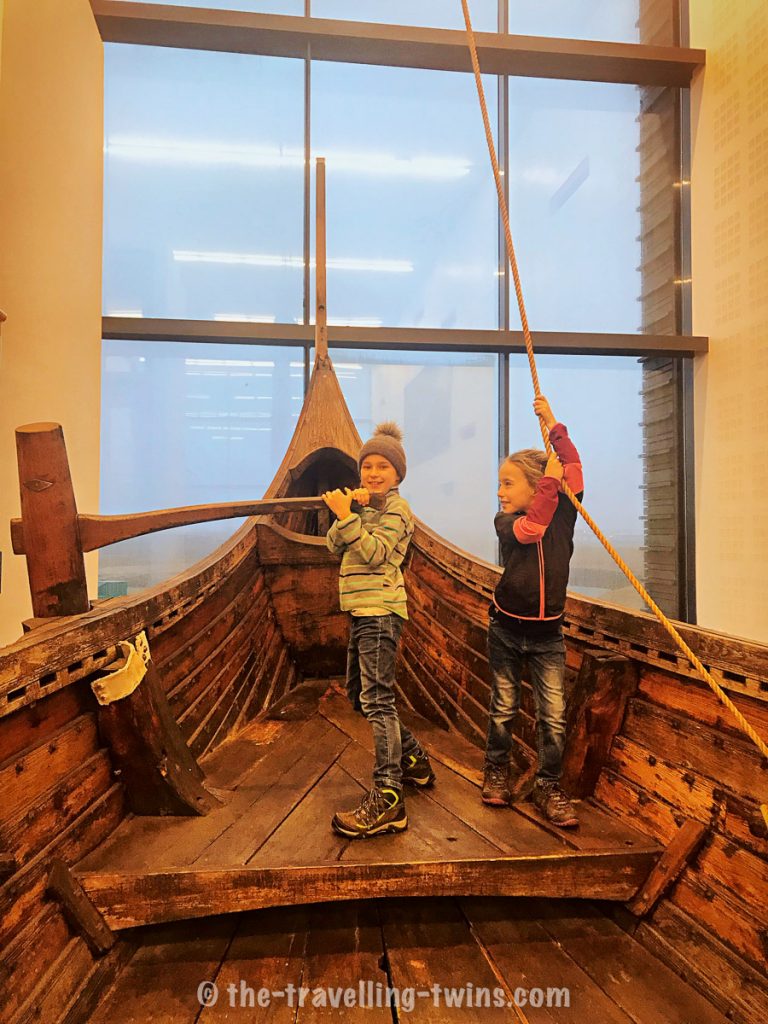
There are a number of family friendly Viking museums across the island. The most popular is the Saga Museum, located in the capital Reykjavik. But the best of the best is tipped as the Settlement Center museum in Borganes about 80km north of the city on the scenic West Coast Ring Road.
Our choice was Viking World about 45km west of Reykjavik because it was on the way to the airport. It’s also a great place to visit if you arrive on an early morning flight and cannot check in to your accommodation – Viking World serves a great breakfast. It is a fairly small museum but has a full size reconstructed Viking Ship and a fascinating film presentation as well as other exhibits and narrative.
Visit Waterfalls
Though the island is dotted with numerous waterfalls, whether you would describe them as kid-friendly, depends on how adventurous (and waterproof) your family are, but we found that with the right clothing every natural site was an adventure that our kids loved. Many of them are also beautifully picturesque so make sure your camera has some spare space.
Among the most kid-friendly waterfalls include:
Svartifoss Waterfall
Svartifoss is located inside the Vatnajokull National Park midway point of a hike through a low lying forest. The bottom of the falls is also perfect for splashing.

Gullfoss
The majestic Gullfoss on the island’s Golden Circle, and one of the most popular waterfalls in Iceland. There are paths and car parks at both the top and the bottom and of course one between. At the top is a visitor-centre serving delicious coffee and cakes as well as meals. And it also sells expensive but high quality souvenirs. The falls are a two tiered arrangement where a whole moorland river plummets suddenly over icy rocks into a chasm and then falls again into a narrow ravine The average flow at Gullfoss is more than 100 tons a second with a measured maximum of twenty times that rate – 2,000 tons of water per second!
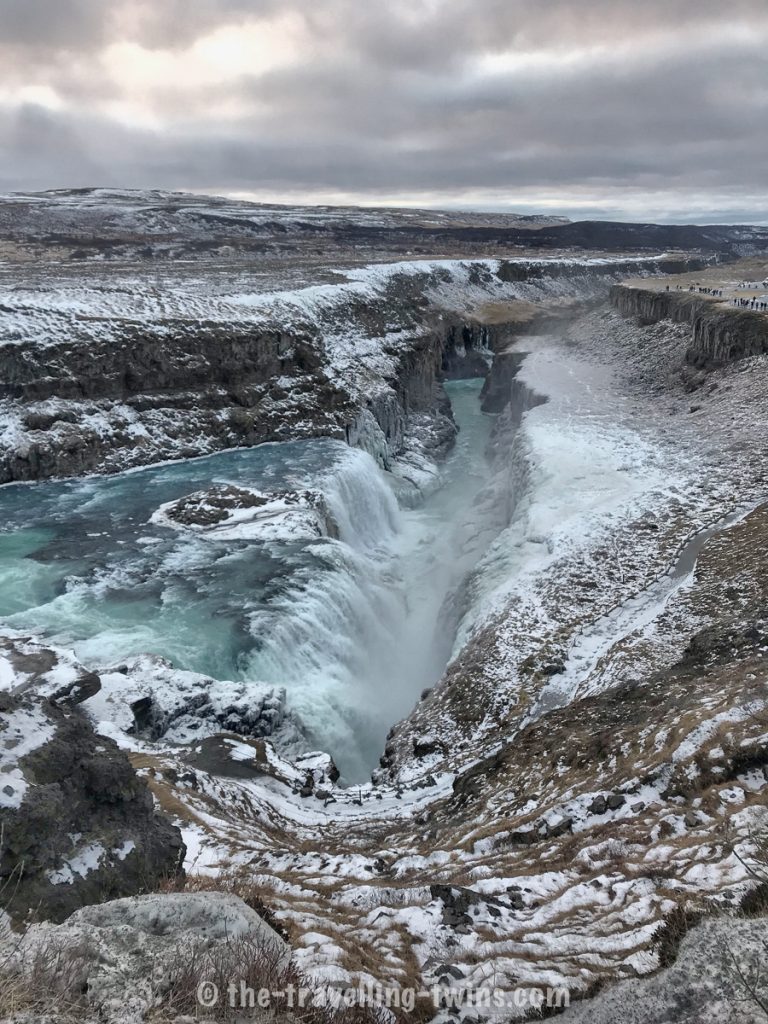
Krikjufellsfoss Waterfall
Krikjufellsfoss is located in West Iceland. Here you can all walk along the river to enjoy the breathtaking scenery.
Skogafoss
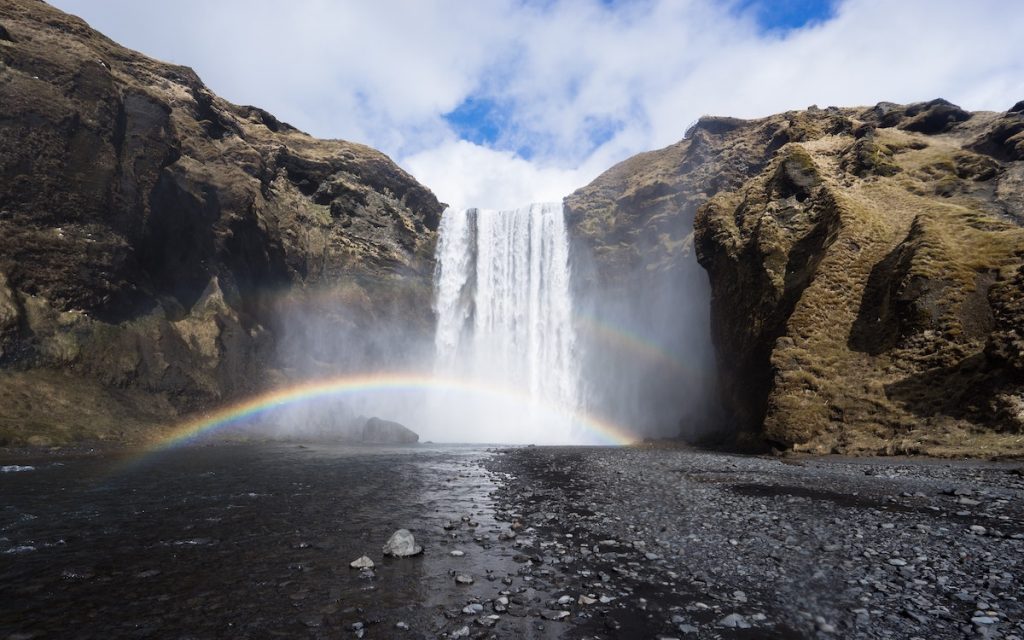
Skogafoss waterfall is another vast whole-river fall and also affords stunning views. A 25m wide river plummets suddenly over the cliff edge of what was once Iceland’s south coast to fall 60m – that’s 200ft! You can climb up a long staircase here to the top of the waterfall and from then hike the moorland plateau. Skógafoss is located just off the south coast road on the way to the black sand beaches. From the main road you can also see lots of other smaller but no less beautiful cascades without even leaving the car, but a couple of detours to the big name falls including Skógafoss will break the journey and fill everyone’s lungs with fresh air. While there you should visit Skogar Museum.
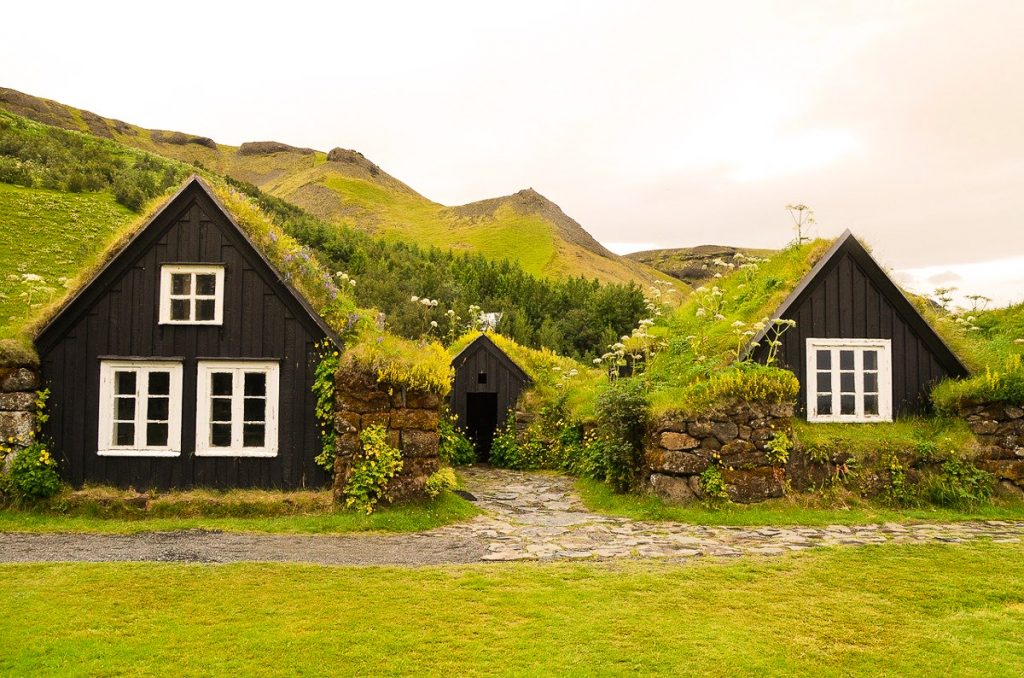
Visit the Beach
Of course you must go to the beach when you are on holiday, but Iceland’s sea beaches are not for sunbathing or sandcastles. Those on the south coast are definitely not for swimming. In fact – the North Atlantic surf here is so dangerous that unwary sightseers are carried off into icy waters every few years by so called “Sneaker waves”. But you must still see these beaches, for they are like no others. Visit these beaches with care and a good jacket. Leave the suncream at home.
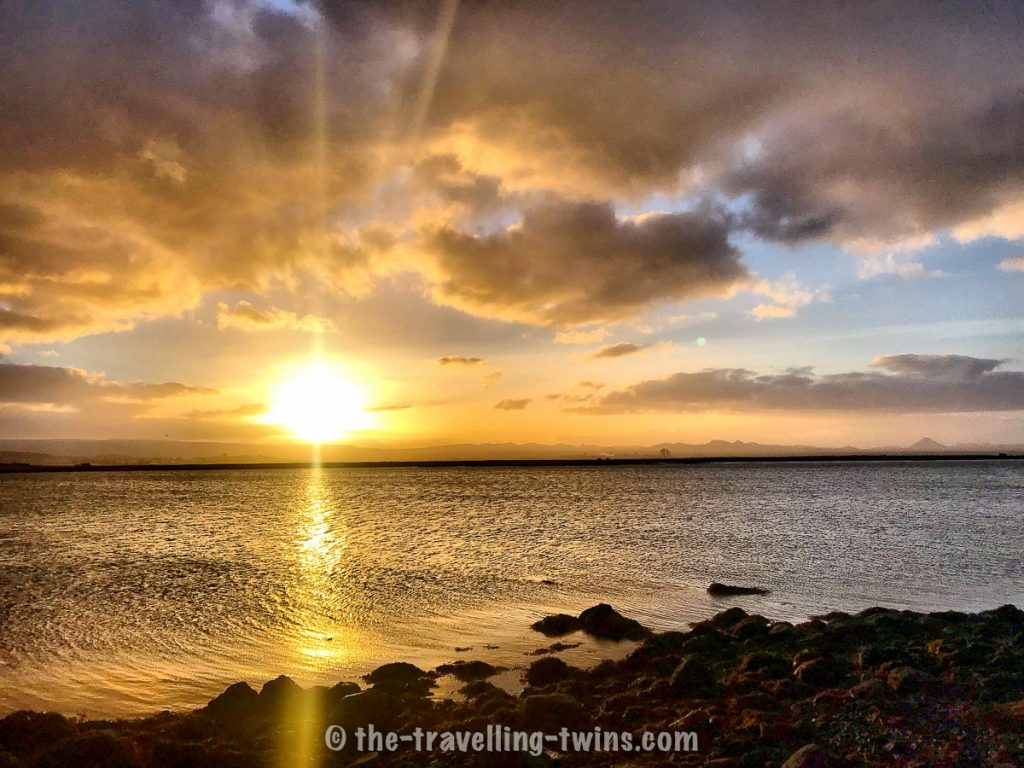
Diamond beach
Have you ever noticed that diamonds look best under bright light on a black cushion? On this beach, the diamonds are ice, the light is the Arctic sky, and the cushion is black volcanic basalt.
Each gemstone on this beach, weighing a ton or more, is thousands of years old but re-polished and then thrown away daily. It has broken off the face of the largest glacier in Europe. It has floated across the Jökulsárlón lagoon in the company of seals and seabirds and then out into the North Atlantic. Polished and sculpted by the roaring grey surf, these chunks of crystal-clear ice are cast up onto the sparkling black shore either side of the rivermouth. Each crystal is unique, and tomorrow it will be gone – replaced by others.
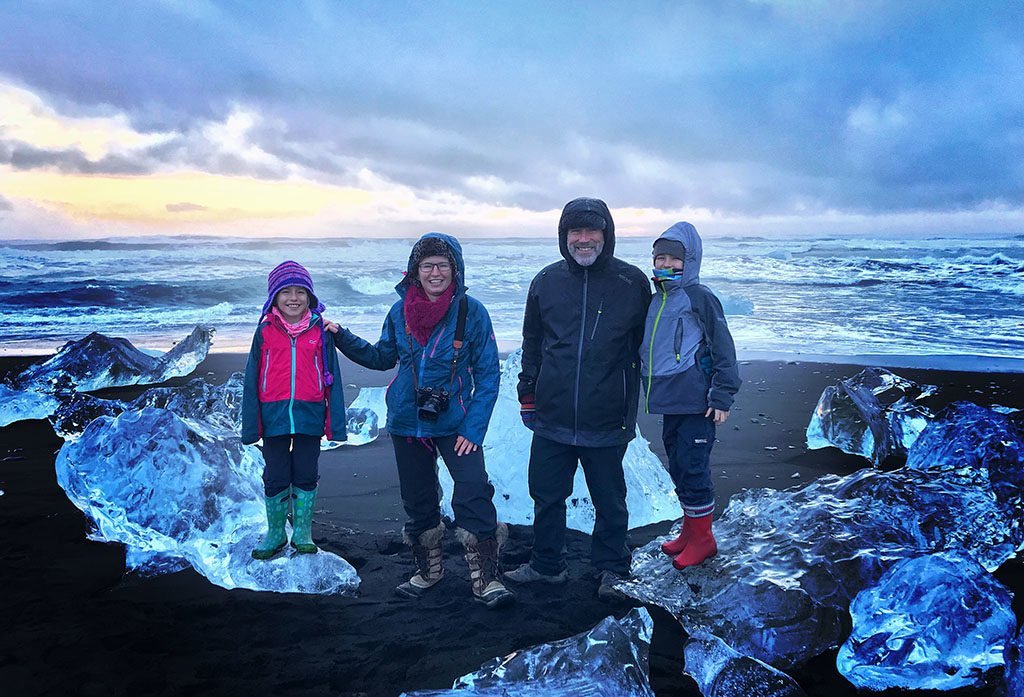
The Diamond beach is just a few yards from the main road and is also just a few hundred metres from the Jökulsárlón lagoon. The two together make a great stop on Icelands’ south coast road route.
Reynisfjara Black Sand beach
With no palm trees, no white sand (or any sand) and no sunshine. Reynisfjara is still one of the most memorable beaches you will see.
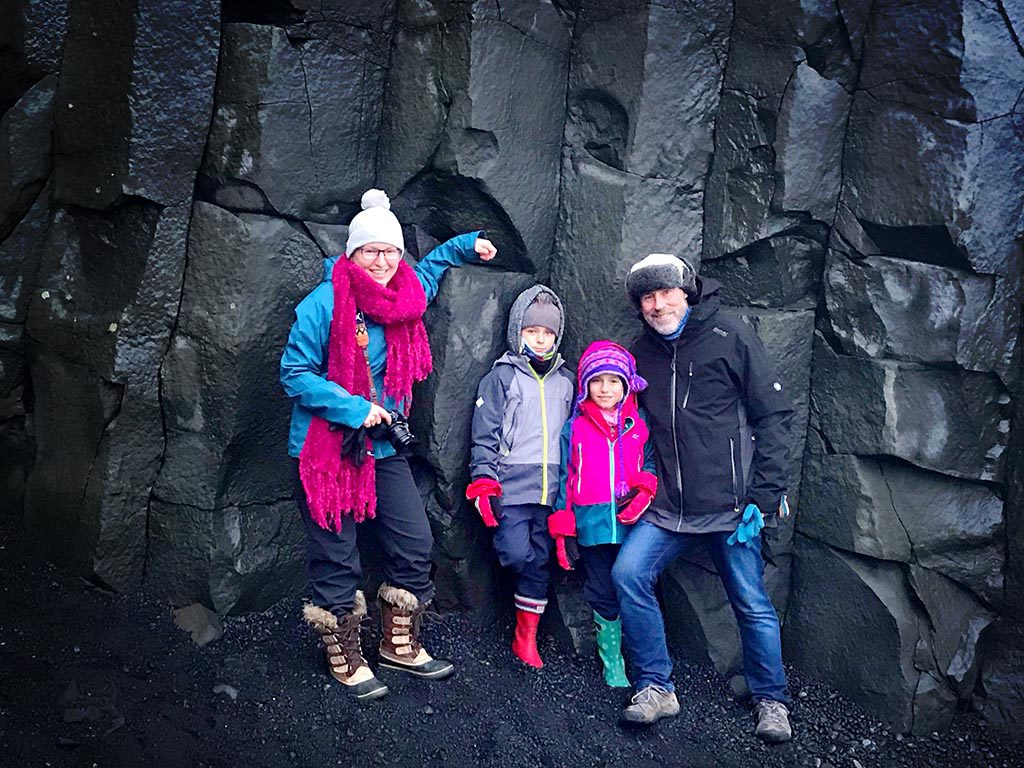
The freezing north Atlantic surf pelts tiny Reynisfjara black beach under the shadow of windswept hills. Black pebbles are commonplace in Iceland, so why did National Geographic list Reynisfjara in its top-10 worldwide? Its most striking characteristic are the vast crystalline basalt cliff-arches and the vertiginous offshore stacks. Legend has it that these giant towers were once trolls, petrified by the morning sunlight after a night of mischief. They stand now as the haunt of sea birds and a warning to unwary travellers for all time. You can see this location in Game of Thrones season seven.
Find the Black Beach on the same road trip as Iceland’s Diamond beach and the Solheimajokull glacier. From a family point of view the beach is a very short walk from the car park and we loved our stay the previous night in the the lovely Black Beach Suites – a modern self catering hostel nearby https://goo.gl/maps/jNwcAZoXeemvGVRU9
Nauthólsvík Geothermal Beach
Did I say that Iceland’s beaches are not for sunbathing and swimming? OK here is the exception. This semi-natural golden sand beach-in-a-harbour is located in Reykjavik and will have its twentieth birthday in 2021. Nauthólsvík attracts half a million visitors annually. The natural sea water is warmed by mixing with geothermal outfall so you and the kids can swim and paddle in the summer, – or in the winter too if you like, but be aware that when the tide comes in the water on the beach is very little different from the surrounding seas which in winter can be down to -2degreesC. If you don’t fancy swimming in that yourself, you can marvel at the craziness of those who do.
Do the classic Golden Circle day trip
Whenever you do your homework about your trip to Iceland, you will read about the Golden Circle day trip. It’s an easy way of seeing three of the most famous Icelandic sights in one day. So it’s a must in case you are in Iceland just for a short stay. The tour route is mostly inland and is approx 250 km (150 miles) and you can do it with no other guide than Google Maps in a hire car from Reykjavik. As the name suggests, the trip is a loop and the farthest point is the Golden Waterfall – Gullfoss we have described above.
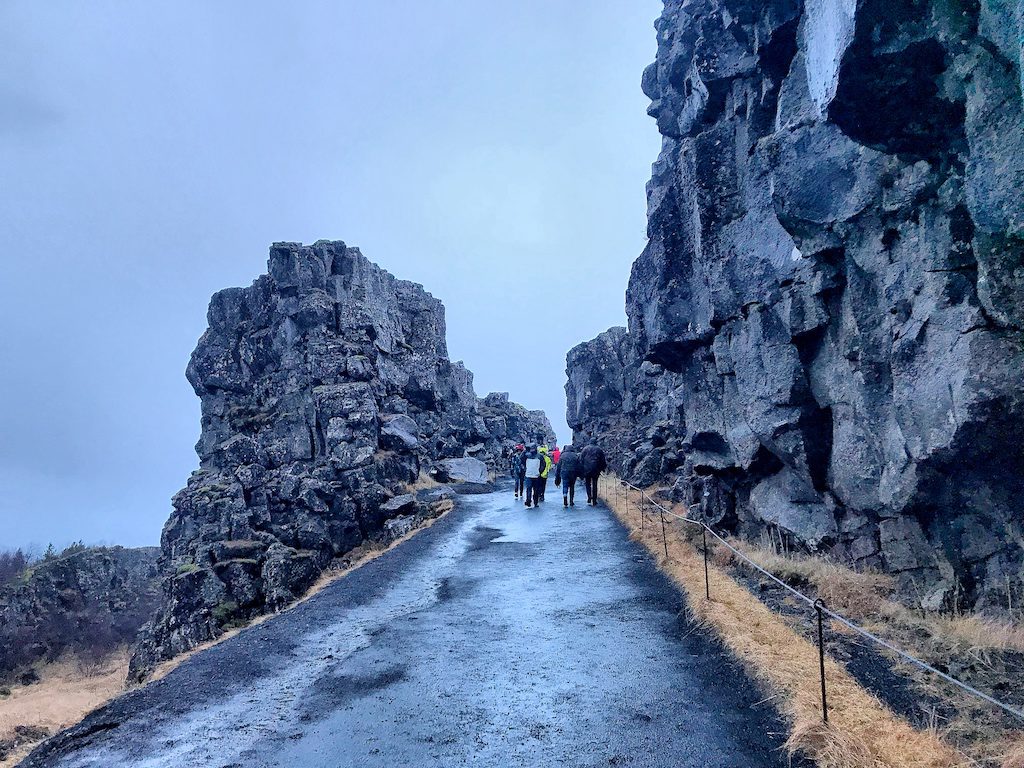
The three top attractions on the Golden Circle tour are Thingvellir National park, Gullfoss waterfall and the Geysir hot spring area. Gullfoss and Geysir are free to see and park – each has a gift shop and coffee shop. The gift shops are very expensive even by Icelandic standards but the stock is generally excellent quality and if you are up for spending a packet, then you will at least come away with something nice. Thingvellir is free too – if you want a 50 mile walk! You pay for the car park, but don’t try to escape, there is no-where to park other than the payable car park itself and the magic cameras have already read your number plate well before you pull up in the parking area.
We took the Golden Circle tour twice during our time in Iceland, once to Gullfoss and Thingvellir and the other time to Gullfoss and Geysir – It really is the perfect way to spend a day in Iceland, seeing some of the most beautiful inland sites the country has to offer. We also stopped at some more “off the beaten track” spots, for example, Friðheimar Tomato Farm, the crater Kerið and the girls fondly recall stopping to say “Hi” to some miniature horses on the way! A sign invited us to a small car park where there’s a little box where we could take little treats for the kids to feed the horses with an honest box for a small payment.
Gullfoss is described above, whilst Thingvellir and Geyser are described on our page of Iceland Landscape (link)
Explore Iceland’s Wildlife
Besides whale watching, Iceland is also a great place for seeing different animals. – especially birds and seals. The island’s geographical location makes it a beloved destination for migratory birds including the North Atlantic puffin.
When the first Vikings came here just over a thousand years ago, the only native mammal was the arctic fox. Reindeer were introduced from Norway a couple of centuries ago and now a wild population of about 7,000 are kept in check by hunting to prevent environmental damage. They are also the subject of winter traffic warnings in the east of the island.
Now the only other inland wild animals are the original foxes and small escapees from human introduction (rabbits, mice, mink) Other mammals are farmed, so not really wild, but worth a mention are those cute little Viking horses and of course the ubiquitous sheep who outnumber people 2:1 overall (and many times more than that in rural areas).
Birdwatching in Iceland
If you are a birdwatching family, you will already know about Iceland’s reputation as a birdwatchers paradise and probably some of the species you will be planning to see. The different species hang out in a variety of areas, some in both east and western parts of the Island, so yours will be a touring holiday governed by migration and breeding seasons.
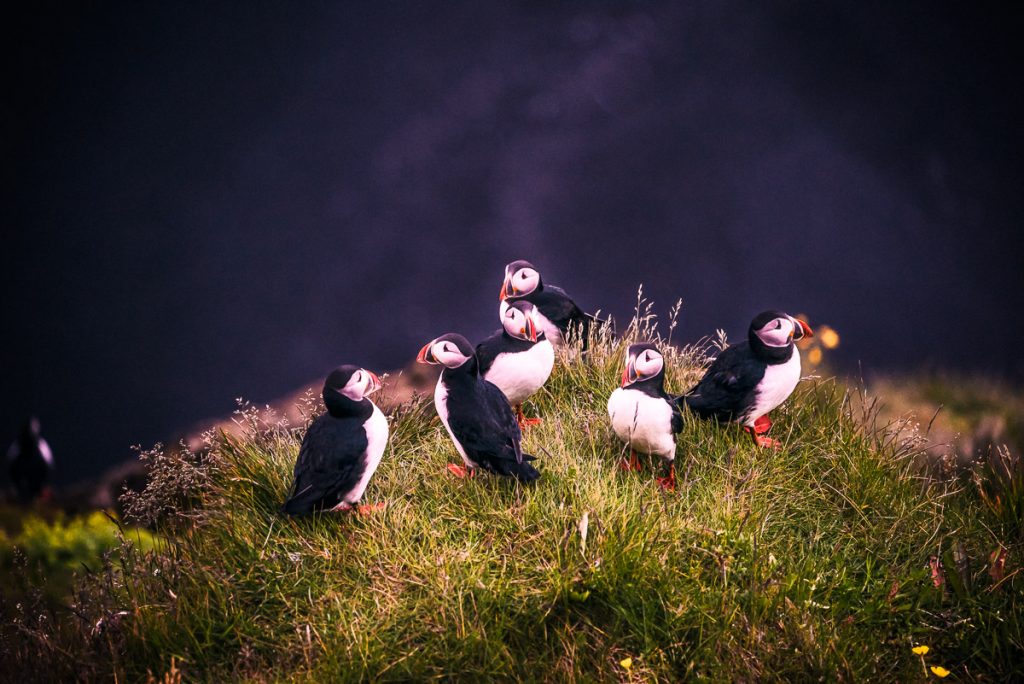
For the rest of us, we should know that Iceland has the largest single bird cliff in the world, -Látrabjarg is home to several million individuals and believed to house more than half the world population of several species. Non expert birdwatchers will marvel at the sheer volume of Iceland’s seabirds, so in summer take a slow ferry to Westfjord or head over to Latrabjarg to watch vast seasonal flocks, especially of puffins. Puffins spend much of the winter far away, out on the frozen oceans where much of their lives remain a mystery to science.
Iceland is a wet nation inland too, and the rivers and wetlands of Iceland are also home to several otherwise rare freshwater fowl and ducks.
And to top it all there are the Icelandic White Tailed eagles – one of the world’s largest birds of prey and the only member of the hawk family on the island. As a pest to farmers these eagles were deliberately hunted and killed, and their numbers fell to 20 breeding pairs in the mid twentieth century. Modern conservation efforts have seen that number rise to about 80 pairs today.
How about a horse ride?
Icelandic horses are one of the most revered animals in the island. They are small in size, so it won’t be a problem for your kids to climb. If you don’t want to ride you can just settle for feeding horses.On the way from Geyser Strokkur there are a few farms signposted with small car parks where you can stop to feed the horses. Next to the fence there is usually a small booth with horse treats that you can pick up and put cash in the money box.
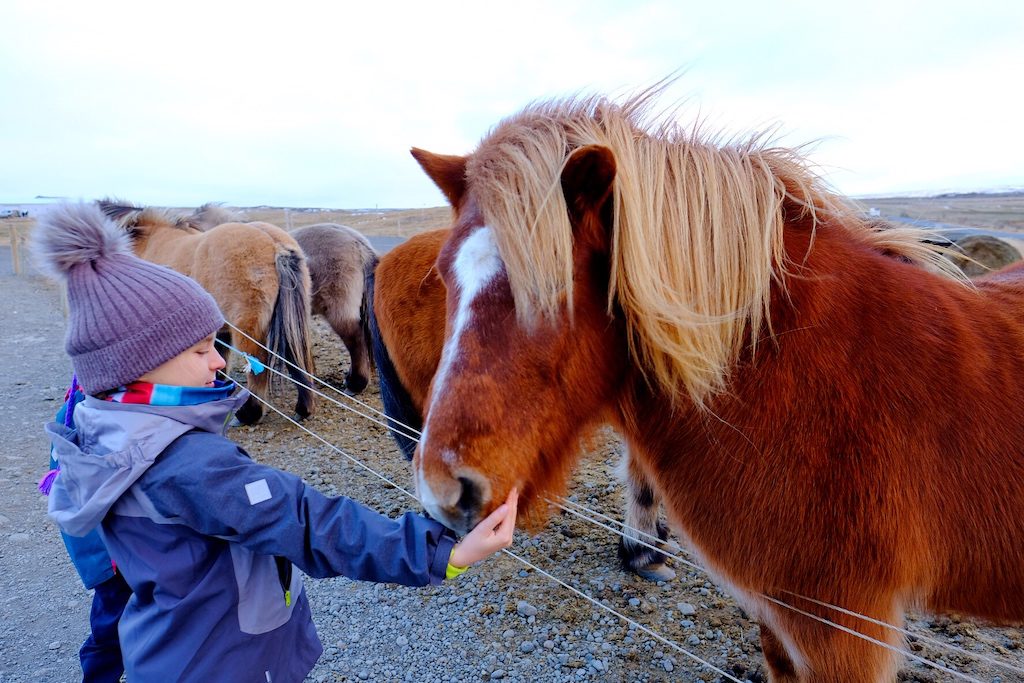
Discover Icelandic Seals
The Jokulsarlon glacier lagoon is the best known destination for seal watching in Iceland. Huge icebergs float on blue waters of the lake, with hundreds of Icelandic seals. Some of these sea animals are so friendly that they would come and greet you. Take a boat ride on this lagoon. The amphibian boat does not have an age limit, but the zodiac boat requires all passengers to be ten years and above. The memory of the up-close view of arctic seal lounging on massive glaciers is something that will stay with your kids for years. There is also a good chance you may come across these sea dogs as you explore the coast of Iceland on your other wildlife and birdwatching excursions.
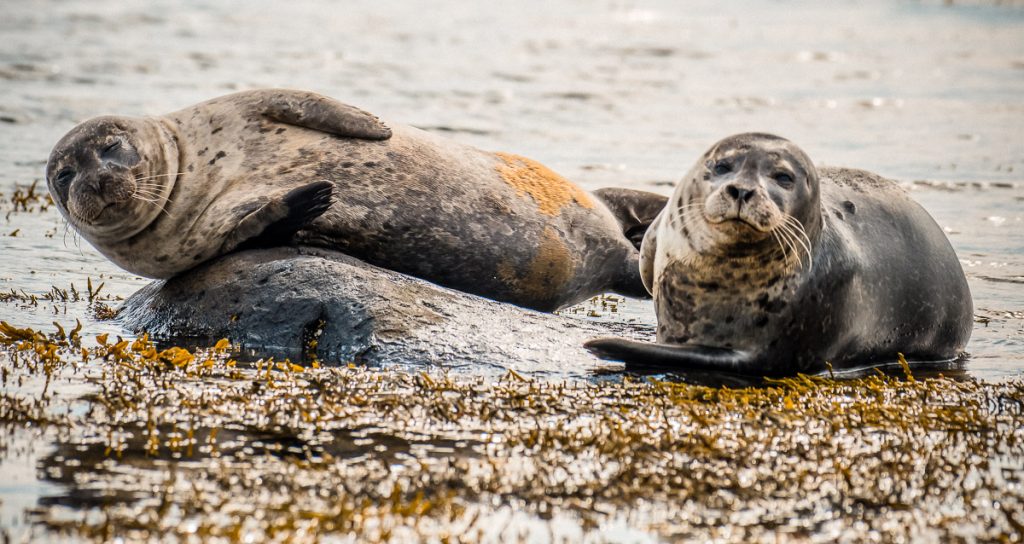
If your kids want to discover more about the seals, then take them to the Icelandic Seal Center located on the Vatnsnes Peninsula. This center provides fascinating information about seals, including their anatomy and natural history as well as their place in Icelandic culture and legend. This is one of the few educational centers on the island outside Reykjavik other than those dedicated to Vikings.
Take your kids to Slakki Petting Zoo
For younger children, Slakki Petting Zoo is located on the South Coast of the Island and is famous for animals such as puppies, kittens, piglets, calves, mice, rabbits, and parrots. The zoo has no age limit for visiting.
The site also has pool tables, an arcade, a playground, and a mini-golf course alongside an ice cream stall and café. Not quite a theme park, but that isn’t why you are considering Iceland for your destination is it?
The zoo is open every weekend of April as well as daily from May to August. But it is easier to arrange for a visit outside the regular opening days and hours.
Join Organised Outdoor Adventures
Iceland has plenty of outdoor adventure options to suit everyone with active tendencies, including family groups. Below are our top picks of the must-try outdoor adventures in Iceland. Options change seasonally and some have minimum age limits, so check when planning your holiday.
Go Whale Watching
Iceland is famous for the whales which visit its waters, and watching these mammals rocket out of the water and then come splashing down, is one of the coolest things to do in any lifetime. It is hard to find a better place for humpback whale-watching in the world than Iceland. Though there are plenty of locations around the island where you can see whales, here is our list of recommendations:
- Watching in Husavik from a Schooner
- In the waters of Akureyri
- In Reykjavik
Try Ice-Climbing
If your kids are the active variety, they will love ice-climbing on glaciers. One of the most common glaciers for hiking is the Solheimajokull Glacier. You will need to wear appropriate gear before climbing up the glaciers. To be safe on a glacier beside common sense warm clothes (in layers) you will need crampons, a helmet and an axe. They are usually provided by the tour guide. Yes you need a guide for this as glaciers are constantly moving creating new cracks which may not be visible under the fresh snow.
Ice climbing is not for kids of all ages. The recommended age is 10 years and above.
See the Northern Lights
With its location close to the Arctic Circle, Iceland offers some of the world’s best viewing points for the northern lights – the Aurora Borealis. The lights are visible for six months a year starting from late September to March.
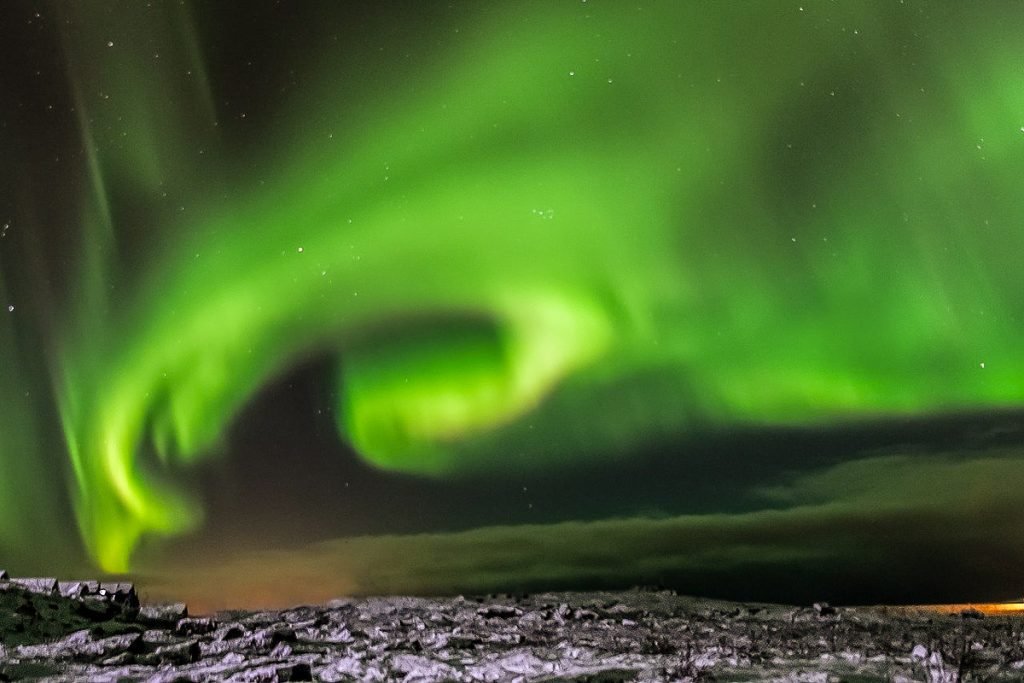
However, this does not mean that you can just lean out of the window, look up the sky and see the lights. Sightings are not guaranteed. They depend on atmospheric conditions, town light pollution, moonlight and sunspot activity. There are several organised tour companies which only go when atmospheric and solar conditions are good – they confirm on the day.
Alternatively, you can download an app (search under Aurora on your smartphone) and research some local hilltop sites away from city lights during daylight. Remember it will be a dark night when you drive out to see the aurora, so this is a game best played by those who have either rented a cottage in the middle of nowhere, or else hired a 4×4 and have time to spare in reconnaissance.
Dog Sledding
Though it is still a new tradition in Iceland; dog sledding is slowly becoming one of its must-dos – especially for a family with kids. The species of dogs used for this exercise include the Alaskan and Siberian huskies and Greenland Dogs.
You will need a tour guide for dog sledding; luckily they operate all year round. Most dog sledding tours have an age limit of 6, but you can find ones that have facilities for children as young as two.
(Link?)
River Rafting
River rafting is one of the top activities on this list for many families visiting Iceland.
Hvita River in South Iceland
This is the most popular river for rafting. River Hvita, just like many rivers, has smooth and rough areas. The first half of the river comprises gentle current, making it ideal for kids over the age of ten. However, the age limit rises up to 12 for the whole region including the rapids.. (link)
Vastari Jokulsa
In the northern parts of the island, the river Vastari Jokulsa serves the same purpose, but unlike in the south, here the age limit is six and above. Some of the tours include swimming, water fighting and you may get to enjoy a hot chocolate prepared from thermal spring water!. (Link)
Snorkel between tectonic plates
We have already mentioned Thingvellir as an essential stop on the Golden Circle. As a single destination for swimming, Thingvellir National Park is an hour from the capital Reykjavik. Here, you can snorkel and swim between the Eurasian and North America tectonic plates. Due to the clear visibility of the glacial water, some swimmers feel a sense of vertigo when looking down into the limpid depths.
As mentioned in our other post, Thingvellir is one of the only two rift valleys worldwide where the tectonic plates are actively separating at a location above sea level. This means that every few years there are seismic movements as the gap opens farther – so keep your fingers crossed that the Lake doesn’t decide to drain away down the chasm while you are swimming in it!
The minimum age for swimming between the tectonic plates is 14 years. (Link)
Lava caving
Explore the subterranean world of Iceland’s geothermal process by going inside lava caves in the Snaefelsjokull National Park in West Iceland. The lava cave in this park is easy to navigate even for children as young as five. Another lava cave that can be easily accessed is the Leioarendi located on Reykjavik Peninsula.
Raufarholshellir found in South Iceland is perhaps the most accessible lava cave for all ages. It includes stairs for young kids to walk on their own. And as an added bonus, children under the age of twelve are allowed on the tour for free.
Helicopter tour
There are several helicopter tours you can book for unmatched views of the island’s natural terrains. The age limit for a helicopter ride is two years, and a single tour can take up to 3 or more hours.
Jeep Tour
This may not sound such an extreme activity but these are Jeeps like no others – they are crazy jacked up big wheel monsters which are an art form in their own right. A jeep tour up in one of these monster trucks to the active volcano in Eyjafjallajokull is beyond cool. Note that due to safety issues, the tour is not suitable for young children, so check your the tour guide for the age limit.
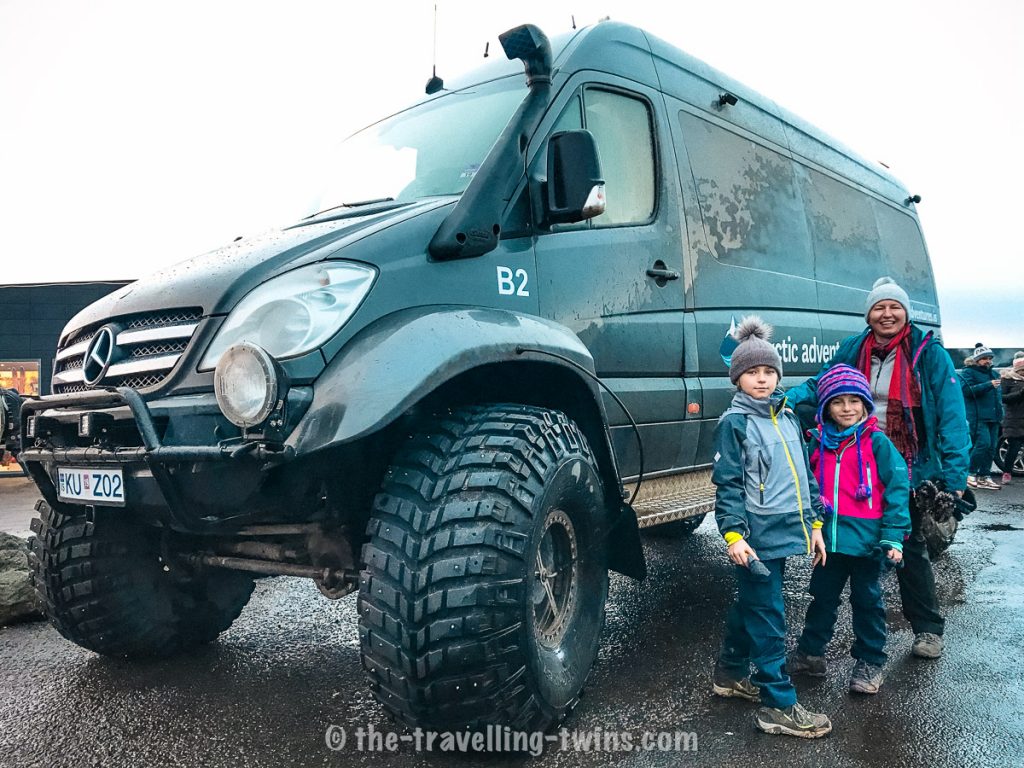
Reykjavik
Apart from Nauthólsvík beach, All the sites and activities we have shared here are located outside the capital Reykjavík; however, there are plenty of kid-friendly things to do in Reykjavik. We have a whole post dedicated to it – Reykjavik with kids.
The Icelandic capital is quite walkable, and that just makes it a more family-friendly city, as it offers an ideal balance between a small town and a big town vibe.
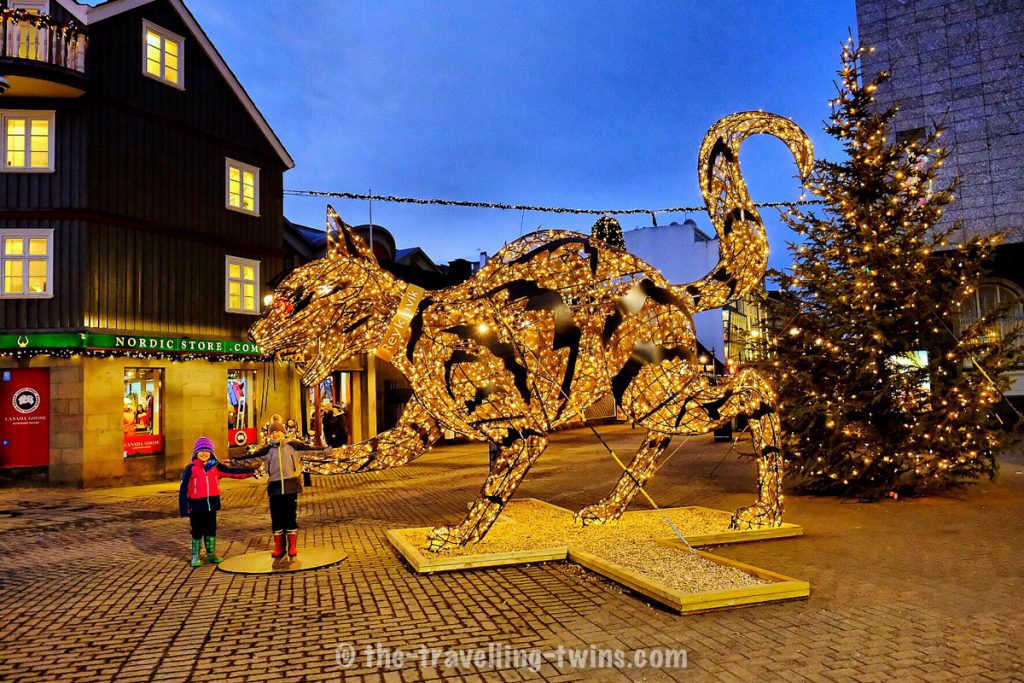
Here are a few of the things you can do in Reykjavik with kids
- Take a free city walking tour
- visit the whale museum and or join whale watching tour
- Visit Harpa Concert hall
- go to Perlan museum
- visit Reykjavik Family Park and Zoo and botanical garden
- go souvenir shopping on Laugavegur Street
- climb the Hallgrímskirkja Church Tower (actually there is a lift!)
- visit Nauthólsvík Geothermal Beach (described above)
- Visit Vioey Island in Kollafjordur Bay
Reykjavik City Card
If you are planning on staying in Reykjavik for some time, consider getting the Reykjavik City Card, which offers the most surefire way of navigating the city and exploring the many attractions and culture. The card is available for both adults and children for 24, 48, and 72 hours. This card gives you unlimited access to all the galleries and museums around the city, including the Arbaer Open Air Museum – an interactive fun park where children can explore the past periods in the history of Iceland. The card also serves as a voucher for the countless geothermal pools in the city, and also as a bus passport.
Also, if you obtain the Reykjavik City Card, you can use it as a voucher for ferry trips from Reykjavik Harbour to Vioey Island in Kollafjordur Bay. The island is a great half-day get away from the bustling city life while providing your kids with an educational tour.
When to Visit Iceland with Kids
Winter in Iceland
Visiting Iceland in winter is magical. This is what we did and our nine year old kids and we loved it. However it does limit your options. We stayed near Reykjavik, did the Golden Circle and explored the south coast. All of these are southern locations because in the south of the island the midwinter day is four or five hours long. The magnificent slow sunsets and sunrises enrich the skies for a few extra hours beyond that. The North of the island is on the arctic circle, meaning that on midwinter’s day the sun is barely visible at all.
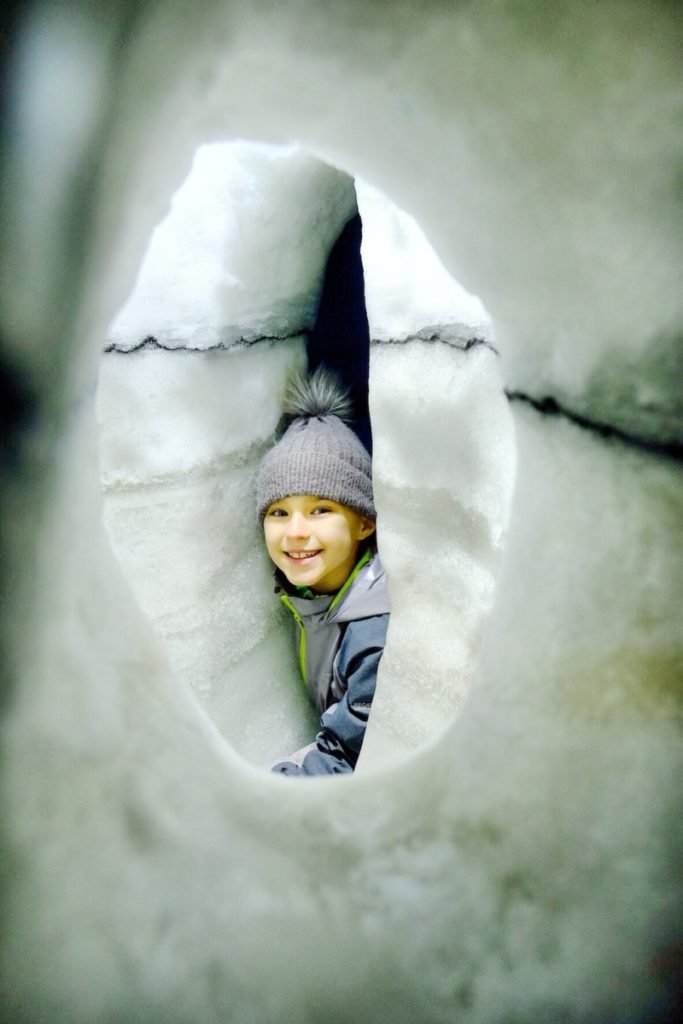
Iceland’s winter weather, although not as cold as you might expect from the nation’s name (thanks to the Gulf Stream) is still cold and extremely windy. Average daytime temperatures on the south coast and Reykjavik are about 0 degC (32 degF) We thought it was fun dressing up in layer upon layer every time we went out – and then and coming back for warming treats in the snug geothermally heated house where we were staying. However, this might not suit everyone. Our kids loved the winter environment and the snow, we loved the fantastic skyscapes. Paradoxically, older kids might feel more cooped-up owing to the short days unless you are all up for a real arctic-busting adventure.
The top reasons for going in winter are : Seeing the northern lights, Christmas in Reykjavik, Wondering at the astonishing New Year Fireworks, and seeing Gulfoss almost frozen
Summer in Iceland
Summer in Iceland is characterized by long daylight hours, mild temperatures, and clear air. It is a perfect time to travel to Iceland with kids and toddlers for the widest range of activities and variety of sights. Many activities and attractions are reopened in the summer and it is easier to travel from place to place in the light and when the roads are clearer.
Although milder than you might expect, Iceland in summer is of course much cooler than the rest of Europe. The average day temperature is between 10–13 °C (50–55 °F) and when you are lucky it can get as warm as 20–25 °C (50 and 55 °F).
Unfortunately, summer is high season in Iceland, so make sure you plan ahead.
Autumn and Spring In Iceland
Early autumn and later spring offers most of the summer attractions whilst avoiding high season. You can avoid the crowds, while benefiting from mild temperatures, and normal or comparatively long daylight hours. The best months to visit are April in spring and September in Autumn. The temperatures are not much lower than summer..
A few more general Tips for Traveling to Iceland with Kids
Age Groups
Because of the climate and the typical travel-by-car to different activities plan of an Icelandic holiday, A trip to Iceland may mean you spend more time together with the family than you might usually do on holiday. This can mean that Iceland is a more suitable destination for a family with young children than one with teenagers who might better enjoy the Island’s adventures along with their own age group.
Safety
For 11 consecutive years, Iceland has been ranked top as the safest country in the world, making it a perfect place to take your kids for a family vacation. The island has very low crime rates, social inclusion, and high gender parity levels. Every day that you spend in Iceland you will be amazed by just how this country is run and how hospitable the people are. Pretty well all Icelanders speak English, so you don’t have to worry about any communication barrier.
Personalised Tours
Consider hooking up to a private tour company to help you plan the whole itinerary: Iceland can sometimes be unforgiving to families, but that is why the tourism industry has specialized in personalized tours. Iceland is expensive, so investing in a personalised tour guide service may be a good way to maximise the benefit from a shorter stay. They should help you navigate such things as the locations of attractions suitable for the season,and the applicability of age limits to the many of the major attractions in Iceland,
Slow your itinerary down
There are plenty of things to do and see in Iceland, and you may be tempted to add everything into your list. But this will only suck the fun out of your family holiday. Our advice is to spend some time just soaking up the beauty of the wilderness gazing at the waterfalls and the sky. We would go out on half-day drives from Reykjavik to discover moors, mountains, lakes and hot springs well off any beaten track and we were never disappointed.
Take advantage of free things
Though taxi and accommodation costs in Iceland will make you cringe, there are several things that you can see for free. For instance, the free walking tour of Reykjavik and the simple pleasures of going for wild windswept walks.
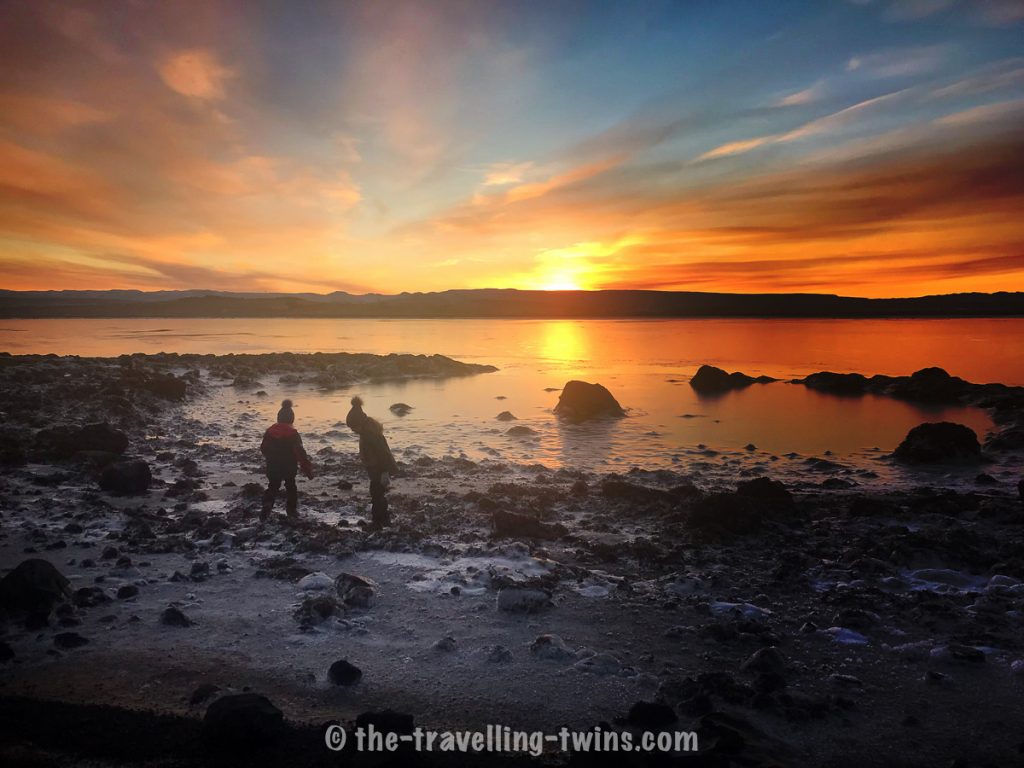
Plan your days
In winter there isn’t much day to be had, and in Summer the long days can tire you out. Most attractions in Iceland tend to be crowded after mid-morning, so for a much calmer and enjoyable time, make sure you visit these places at opening hours.
What to eat while in Iceland with Kids
As you know Iceland is an expensive country. But you can make your stay more affordable by buying groceries in the supermarkets and cooking your own meals. Even the supermarkets are expensive, but when you compare that with an average meal for a family of 4 in a regular restaurant at perhaps around $150 the supermarkets don’t seem so bad after all. You must try Skyr which is a delicious soft cheese, which you might mistake for yoghurt at first glance but with a richer flavour, and we made delicious fish pies – sea fish is of course one of the few foods which are not imported from abroad.
Iceland With Kids – Conclusion
Is it a good idea? Definitely YES. Go to Iceland with your kids while they are still young enough to find adventure in snowballs and waterfalls. We did just that and we all loved it.
Iceland Family Holiday – pin it

Privacy Policy Disclaimer
This website uses affiliate links for income and support.
If you like our website, please consider using these links. You will be directed to the vendor, and we will get a small commission on your purchase price at no increased cost to you.
We have researched facts stated here as far as practicable but please check anything critical before committing your time and money. We do not claim any special knowledge or expertise, and we are not consultants for our readers.